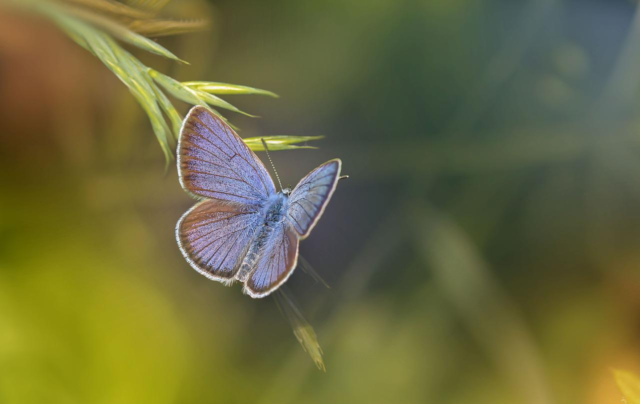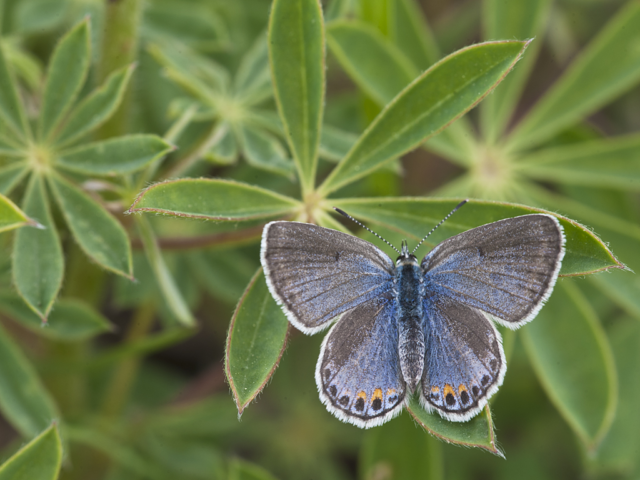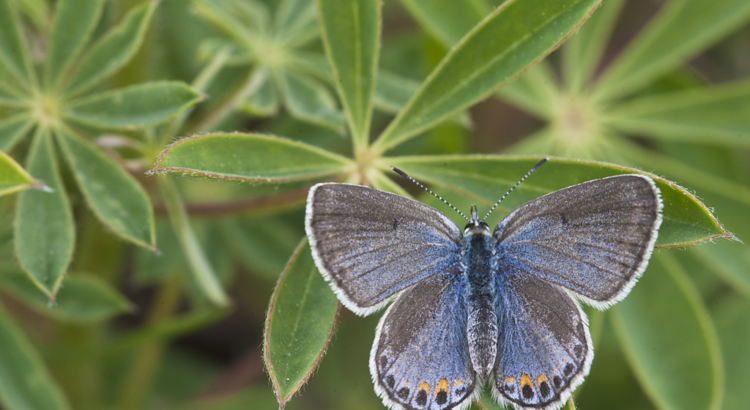Tracy Lyons – SCA NH Corps – Discover the Power of Parks Interpretive Ranger
Perhaps you have seen a small, blue butterfly flitting around in early spring or late summer. It could have been the common spring or summer azure butterfly, or you might have been lucky enough to spot the elusive Karner blue butterfly (Lycaeides melissa samuelis). This butterfly is remarkable to New Hampshire because it is the state butterfly- but for over a year there were no Karner blue butterflies to be found.

The Karner blue butterfly measures an inch in diameter. Females and males differ slightly but can be distinguished when they open their wings. The inside of male wings will be dusky blue with a black and white border. Females will look similar but have a row of black and orange dots at the bottom of the wings, similar to the outer part of their wings.


Karners can be found fluttering around oak or pine savannas. These are habitats were less than half of the canopy is covered by trees, allowing for more flowering plants and grasses to grow. These habitats are home to Karners because they are also home to a flowering plant called Lupine. What has made it so difficult for the Karners population to rebound is because of its reliance on Lupine. This is the only plant that the butterfly lays its eggs on and that the Karner caterpillars eat.
The first flight of the Karner happens in mid May to June. The eggs will hatch in April and the caterpillars will emerge to eat the leaves of the Lupine. Only a millimeter long, they remain as caterpillars for a month, then pupate for a little over a week. When they emerge they live on average for about 3-4 days but some can live for up two weeks. This is long enough for them to lay eggs, and second flight occurs in July-August. The eggs of this flight won’t hatch right away though. They will lay dormant until next spring when the next round of butterflies will emerge and cycle begins again.

In 1992 the Karner was named the state butterfly of New Hampshire, and by 1999 it was regionally extinct. Luckily, It was a short term extinction thanks to the efforts of the New Hampshire Fish and Game’s Pine Barrens Project. Their goal was to reestablish a viable population of Karners. In 2000 they began a project to reintroduce the Karner. By 2001 they released the first set of butterflies gifted from a project in New York.
The Pine Barrens Project has around 300 acres of pine barren in Concord, NH. They have spent the last 22 years continuing to manage the area. This is done through prescribed burns, bush cutting, and native planting. Prescribed burns and bush cutting help to clear out trees and create the open habitat that Lupines and Karners prefer. Native planting encourages the growth of plants that will benefit the Karner and other species that use these habitats.
There is now a thriving population of Karners in the pine barren. Last estimates put the population between 3,000-5,000 individuals. The project is continuing to monitor the Karner population and release new individuals to boost numbers.
The conservation efforts by the Pine Barrens Project have been a success and with time hopefully the Karner will return to rest of of the state. Next time you see a small butterfly flitting by look closely, it might be another azure or it could be the Karner blue butterfly!

